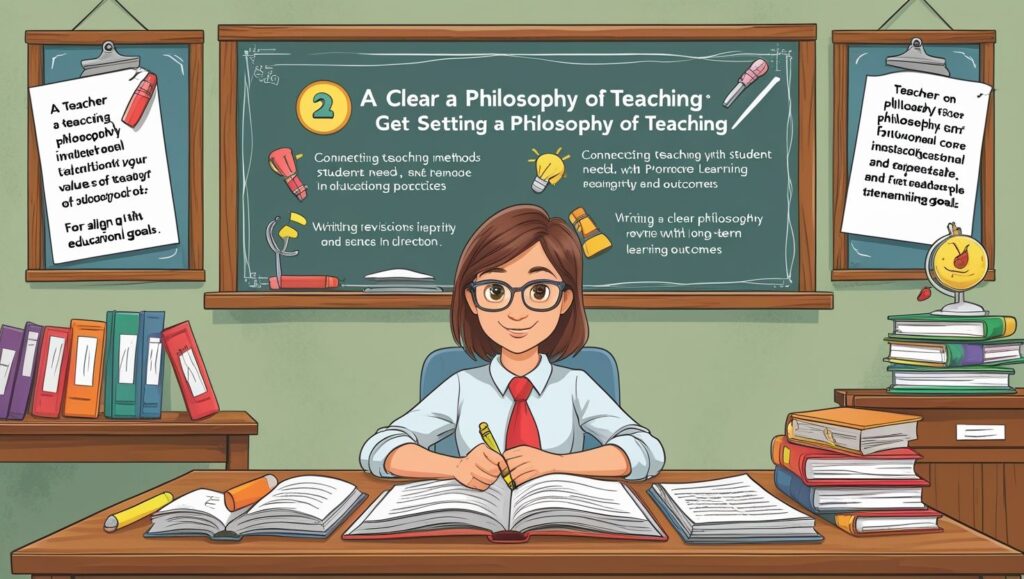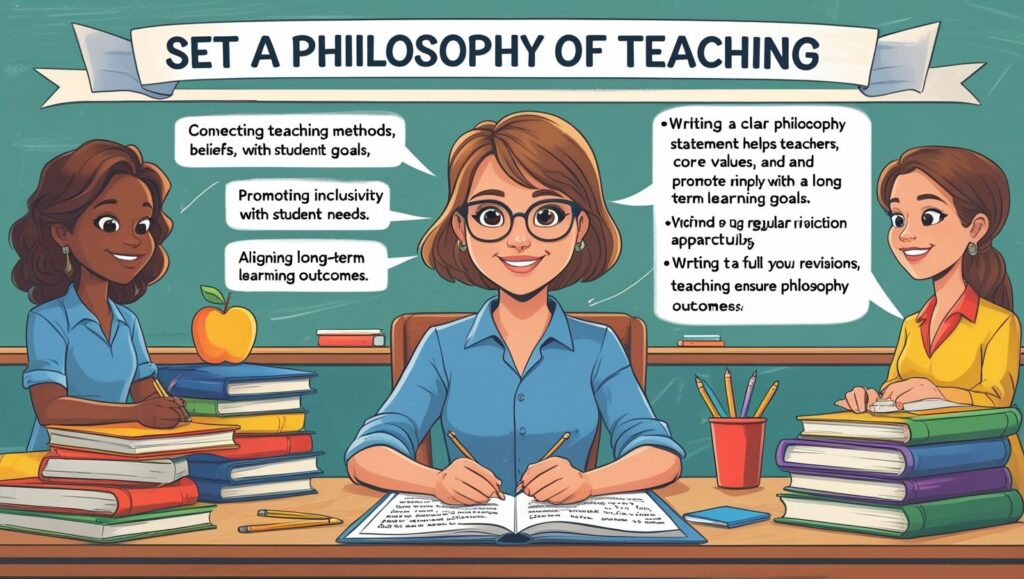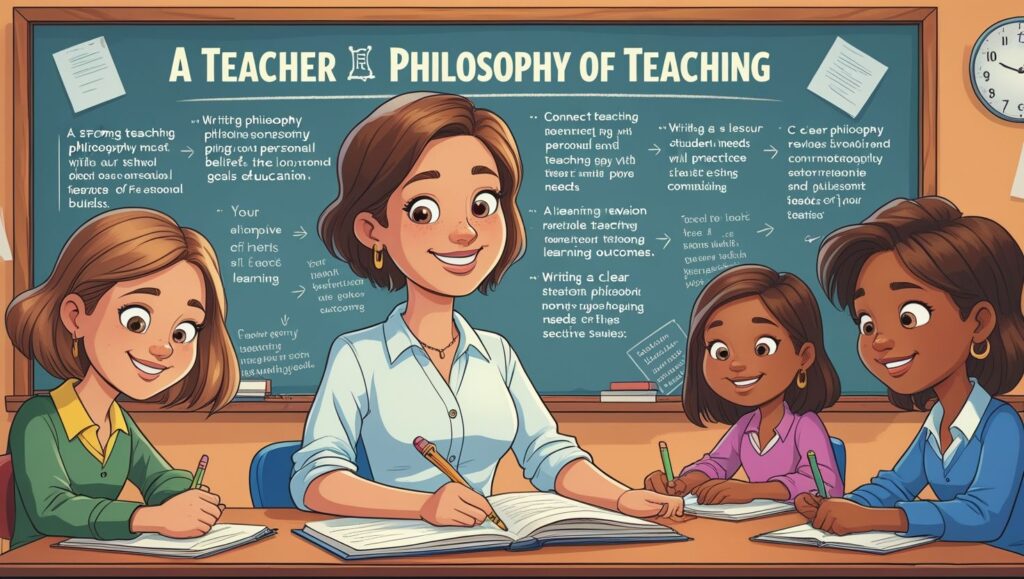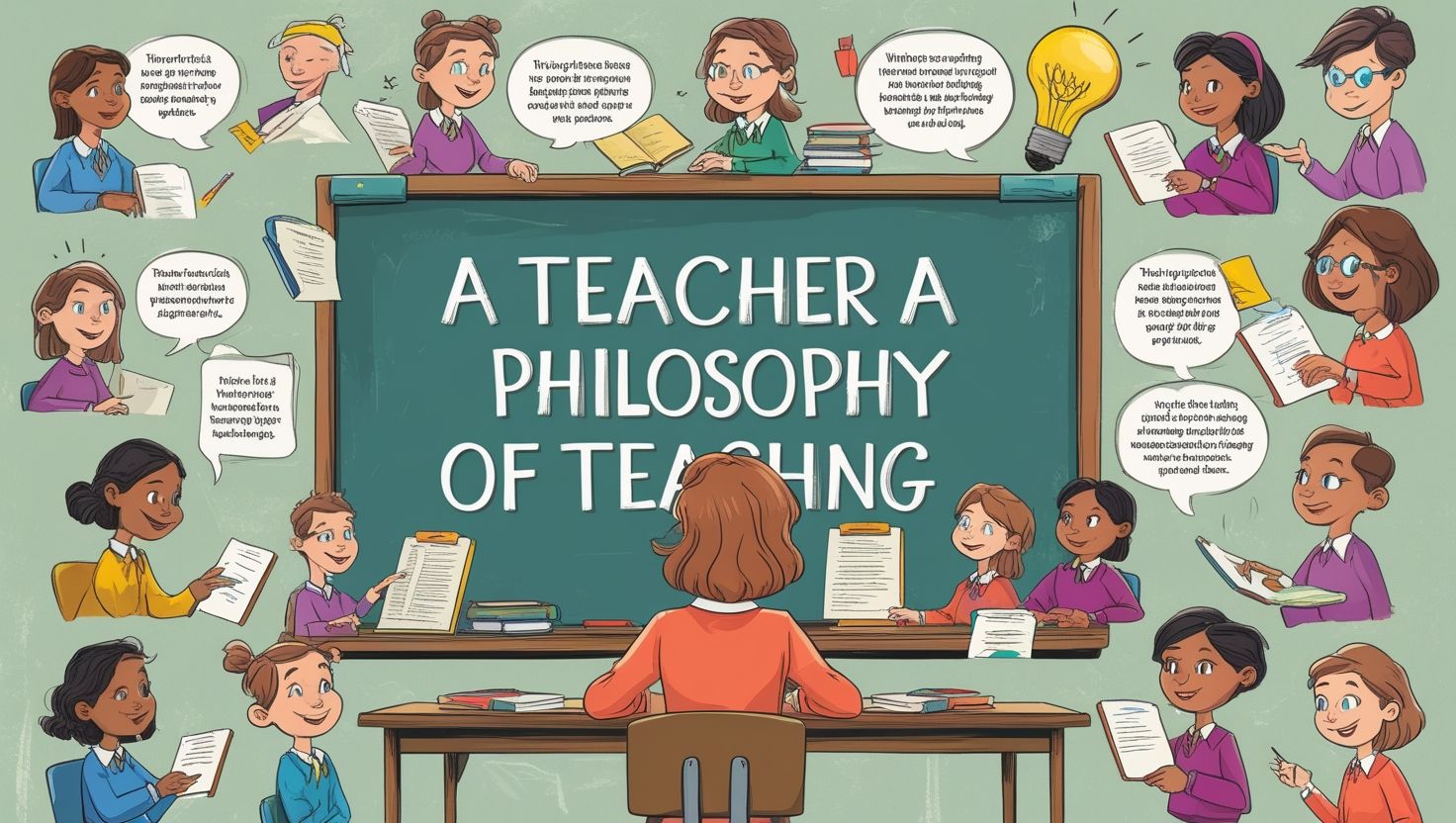Introduction
How a Teacher Can Set Philosophy of Teaching, A teacher’s philosophy of teaching is more than just a written statement. It represents personal beliefs, values, and practices that guide teaching. Every educator develops a philosophy, consciously or unconsciously, which influences classroom interactions and learning outcomes. When teachers shape a clear philosophy, they connect purpose with practice, ensuring consistent decision-making. Furthermore, a teaching philosophy helps educators align lessons with student needs, educational goals, and evolving learning environments. Many teachers reflect on their philosophy during career milestones such as teacher training, professional development, or while seeking teaching positions.
Additionally, schools value these philosophies because they demonstrate clarity of vision and commitment to student growth. Importantly, creating a philosophy requires continuous reflection, adaptation, and refinement over time. As society, students, and educational tools evolve, so must a teacher’s guiding principles. Therefore, setting a personal philosophy of teaching becomes a lifelong process for dedicated educators.
Understanding the Concept of Teaching Philosophy
A teaching philosophy is a statement that describes how a teacher approaches learning, instruction, and classroom management. It explains the reasons behind teaching methods and outlines what the teacher believes education should achieve. At its core, it connects personal values with professional responsibilities. Teachers develop a philosophy by reflecting on their learning experiences, role models, and cultural influences. Additionally, it involves considering broader questions about the purpose of education, such as whether it should focus on knowledge, critical thinking, or personal development. Moreover, a teaching philosophy provides coherence and consistency to daily practice, ensuring that classroom decisions reflect long-term goals.
For example, a teacher who believes in student-centered learning will design lessons that promote collaboration, inquiry, and exploration. In this way, philosophy becomes a foundation for meaningful teaching. Without it, instructional strategies may lack direction or fail to inspire students effectively.
Reflecting on Personal Beliefs about Education
The first step in setting a teaching philosophy is reflecting on one’s beliefs about education. Teachers must ask themselves: What is the purpose of education? Should schools primarily prepare students for careers, or should they nurture creativity, critical thinking, and citizenship? Such questions guide teachers toward identifying their priorities and principles. Furthermore, reflecting on past learning experiences can help teachers understand what worked well for them and what did not.
A teacher who struggled with rote memorization may choose to emphasize active learning strategies instead. Additionally, cultural background and personal values play a strong role in shaping beliefs. Teachers who value equity, for example, may place inclusion and diversity at the heart of their philosophy. Reflection is not a one-time process but an ongoing journey. As teachers gain experience and encounter diverse learners, their beliefs continue to evolve, reinforcing the importance of self-awareness in education.

Identifying Core Values in Teaching
Core values are the pillars upon which a teacher’s philosophy rests. They reflect what educators consider most important in the learning process. For example, honesty, respect, creativity, and collaboration are values that many teachers adopt. When teachers clearly define their values, they can create classroom environments that consistently reinforce those ideals. Moreover, core values guide teachers when making difficult decisions, such as resolving conflicts or addressing discipline issues.
If fairness is a core value, then disciplinary actions will be consistent and transparent. Additionally, students benefit when teachers communicate these values openly. This transparency builds trust and creates a culture of mutual respect. Core values also influence teaching style. A teacher who values curiosity may incorporate project-based learning, while one who prioritizes discipline may prefer structured, teacher-led lessons. Ultimately, identifying and embracing core values ensures that teaching remains authentic, purposeful, and aligned with both personal and institutional goals.
Connecting Teaching Philosophy with Learning Goals
A philosophy of teaching becomes effective when it aligns with learning goals. Teachers must consider what they want students to achieve by the end of a course or school year. Learning goals can include knowledge acquisition, problem-solving skills, creativity, or social responsibility. When teachers design lessons consistent with these goals, their philosophy translates into meaningful action. Additionally, clear goals ensure that students understand the purpose of their learning.
For example, if a teacher’s philosophy emphasizes lifelong learning, lessons will include opportunities for self-directed exploration. Moreover, assessment strategies should reflect these goals. Teachers who prioritize critical thinking may use open-ended questions rather than multiple-choice tests. Furthermore, aligning philosophy with goals helps teachers evaluate their success and make improvements. Without clear connections, a teaching philosophy risks becoming abstract or irrelevant. Therefore, teachers must actively link their beliefs with practical outcomes that benefit both students and society.

Exploring Teaching Styles and Methods
A teacher’s philosophy is closely connected to the teaching styles and methods they choose. For instance, educators who value student independence may prefer inquiry-based learning, while those emphasizing structure may adopt traditional lectures. The philosophy provides a framework for selecting strategies that best reflect the teacher’s values. Furthermore, teaching styles should remain flexible to accommodate different student needs. For example, a teacher may combine collaborative projects with direct instruction to balance engagement and clarity.
Additionally, philosophy shapes how teachers use educational technology. Those who see technology as a tool for creativity may encourage digital storytelling, while others may prioritize its use for assessment. Importantly, consistency between philosophy and method builds credibility. Students recognize when teachers practice what they believe, which enhances trust and respect. Moreover, exploring diverse methods allows teachers to refine their philosophy over time, ensuring it adapts to changing educational contexts and student expectations.
Writing a Teaching Philosophy Statement
Once teachers have reflected on beliefs, values, and goals, the next step is writing a philosophy statement. This document summarizes their approach to teaching in a clear, concise manner. Typically, it includes descriptions of instructional strategies, classroom management, and student engagement practices. Furthermore, a good philosophy statement communicates passion and commitment to education. It should demonstrate how a teacher’s values translate into action. For example, if inclusion is important, the statement may highlight strategies for supporting diverse learners.
Additionally, writing such a statement helps teachers articulate their vision, which can be valuable during job applications or evaluations. Moreover, the process of writing provides clarity and self-awareness, reinforcing personal convictions. Teachers should avoid generic phrases and instead focus on authentic reflections that make their philosophy unique. Finally, a philosophy statement is not static. It must be revisited and revised regularly to remain relevant to evolving teaching practices.
Adapting Philosophy to Diverse Classrooms
Modern classrooms are diverse, with students representing different cultures, abilities, and learning styles. Therefore, a teacher’s philosophy must be adaptable. Rigid philosophies may fail to meet the needs of all students. Instead, educators should integrate inclusivity and flexibility into their guiding principles. For example, teachers can commit to differentiated instruction that allows each student to learn in ways best suited to them. Additionally, teachers who value equity may prioritize culturally responsive teaching practices.
Adapting philosophy also involves openness to student feedback, as learners often provide valuable insights into teaching effectiveness. Moreover, technology offers tools for personalized learning, which can help teachers live up to inclusive philosophies. By considering diversity, teachers create environments where every student feels valued and supported. Ultimately, adaptability ensures that philosophy remains practical, compassionate, and aligned with real-world educational challenges. Thus, flexibility becomes a crucial component of any strong teaching philosophy.
Revising and Evolving Teaching Philosophy Over Time
A teaching philosophy should never be considered final. Education is constantly evolving, and so are student needs. Therefore, teachers must revisit and revise their philosophy regularly. Professional development workshops, peer collaboration, and classroom experiences all provide opportunities for reflection and growth. Additionally, exposure to new teaching strategies or educational research may challenge existing beliefs. For example, a teacher who once relied heavily on lectures may adopt more interactive approaches after discovering their effectiveness.
Moreover, societal changes, such as advancements in technology or shifts in cultural values, also influence teaching philosophies. Teachers who embrace revision show humility and a willingness to improve. This openness benefits students, who receive instruction aligned with current best practices. Furthermore, updating a philosophy ensures that teaching remains dynamic and forward-thinking. By continuously evolving, teachers remain responsive, relevant, and capable of inspiring learners in an ever-changing educational landscape.

Conclusion
Developing a philosophy of teaching is a reflective and transformative process. It begins with exploring personal beliefs, identifying core values, and setting clear learning goals. From there, teachers align their philosophy with teaching methods, classroom practices, and diverse student needs. Writing a philosophy statement provides clarity, while revising it ensures growth and adaptability. Moreover, a strong teaching philosophy builds trust, consistency, and purpose in education. Importantly, it is not just a professional requirement but also a personal commitment to meaningful teaching.
As education evolves, teachers who embrace reflection and adaptability strengthen their ability to inspire students. Ultimately, setting a teaching philosophy is not about creating rigid rules but about shaping a vision that nurtures learners, empowers communities, and guides teachers on their lifelong journey in education. In this way, a well-developed philosophy of teaching becomes a lasting contribution to both students and society.
References
- Brookfield, S. (2017). Becoming a Critically Reflective Teacher. Jossey-Bass.
- Palmer, P. J. (2017). The Courage to Teach: Exploring the Inner Landscape of a Teacher’s Life. Jossey-Bass.
- Pratt, D. D. (2002). Good Teaching: One Size Fits All? New Directions for Adult and Continuing Education, 93, 5–16.
- Schön, D. (1983). The Reflective Practitioner: How Professionals Think in Action. Basic Books.
- Loughran, J. (2006). Developing a Pedagogy of Teacher Education: Understanding Teaching and Learning about Teaching. Routledge.

Your blog is a treasure trove of valuable insights and thought-provoking commentary. Your dedication to your craft is evident in every word you write. Keep up the fantastic work!
Bosphorus cruise I was amazed by the mosaics in Hagia Sophia. https://www.soldescent.com/?p=5909
Thank you for the good writeup It in fact was a amusement account it Look advanced to far added agreeable from you However how could we communicate
Excellent blog here Also your website loads up very fast What web host are you using Can I get your affiliate link to your host I wish my web site loaded up as quickly as yours lol
Spice Bazaar tour Amazing memories from this city tour, thank you! http://www.tecnoac.com/?p=14884
Bosphorus guided tour Efficient booking process and confirmation. https://joost-niemoller.nl/?p=6016
I wanted to take a moment to commend you on the outstanding quality of your blog. Your dedication to excellence is evident in every aspect of your writing. Truly impressive!
Your blog is a constant source of inspiration for me. Your passion for your subject matter is palpable, and it’s clear that you pour your heart and soul into every post. Keep up the incredible work!
guided Istanbul tour Our guide shared personal stories which made it special. http://sahalaenterprise.com/?p=8230
Interesting read! Seeing platforms like legend link ph app casino really cater to local players with things like localized payments is smart. It’s all about convenience & trust, right? Definitely elevates the experience beyond just the games themselves.
Solid analysis! Seeing how user engagement is key, especially with things like streamlined registration – reminds me of SZ777 Login‘s focus on that frictionless experience. Great points about conversion optimization!